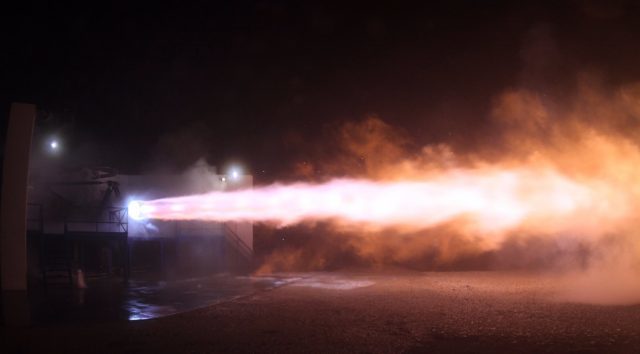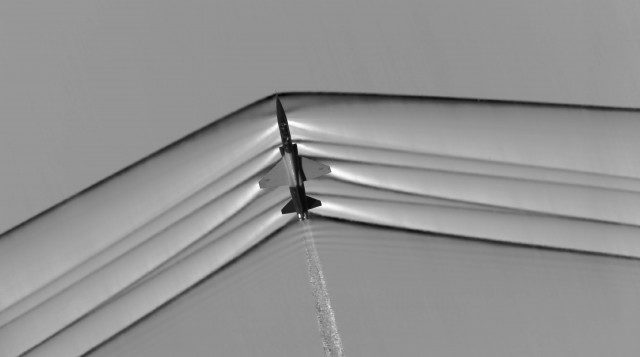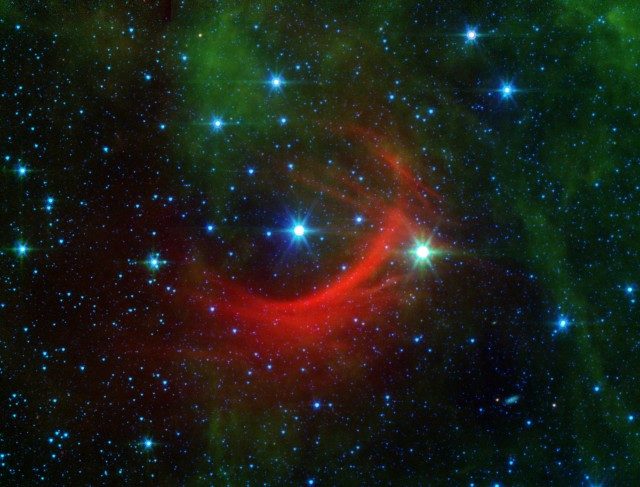To capture the cone itself, the researchers set up CCD cameras next to the cone-generating apparatus. One of the cameras was a streak camera, which exploits the motion of charged particles to create a spatial "pulse profile" that characterizes the light waveform in 3-space over time. Using the streak camera and the CCDs, the researchers captured a 2D sequence of images from three perspectives in a single take. They then spliced the images back together like a CAT scan to make a 3D model of the cone.
Lead author Jinyang Liang hopes that these developments can be pressed into use not just in physics, but in neuroscience. Their imaging setup can capture 100 billion frames a second. With that kind of temporal resolution, researchers could capture neurons firing in real time.
Shock and awesome
Among the other visually rewarding ways we visualize invisible things going at speeds that generate shockwaves are Mach diamonds:

Shockwaves, it turns out, are pretty easy to photograph if you have the right kind of camera setup. This jet is producing a Mach wave at its nose because the air molecules can't get out of the way fast enough for the plane to make its way neatly through them — not unlike the physical wave that happens at the bow of a fast-moving ship as it plows through the water. It was photographed with a method called Schlieren photography, which takes high-speed images and then compares the backgrounds, to see where the wave of distortion traveled through the frame.
And shockwaves aren't constrained to places with an atmosphere, either. They also happen at a much, much larger scale. When a body in space gets moving fast enough, it can produce a phenomenon called a bow shock. Kappa Casseiopeiae is an enormous rogue star traveling at 2.5 million miles an hour, which is a quarter of a percent the speed of light. It's so big, and moving so fast, that its bow shock is twelve light-years across and stands four light-years apart from the star itself. That's like our sun having a feature that stood as far away as Alpha Centauri. Whoa.






A: The fastest that things with/without mass can go? (Aware of long ongoing debate of particle vs. wave theories of light, which end up somewhat like quantum stuff, when you look, it WON'T be there, etc. If you wish for it to behave like a particle, it will be a wave, and vice versa.)
and
B) Things can somehow go faster than 'c' so it's NOT a constant?
Go back to your fake news - lest this is also. I don't know.
R.C.